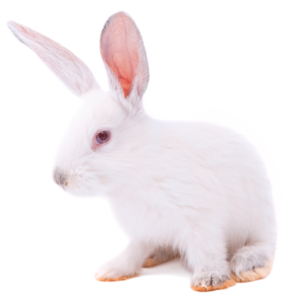
Why Guinea pigs, White Rabbits, Yorkshire Pigs, and Beagles in CBRN Tests?
Animal models are often used when trying to study the possible effects of a medication or treatment and subsequently extrapolated to humans.
Which species is selected depends on what is being studied.
🕖 Reading Time, 4 minutes
Guinea Pigs
Nerve agent poisoning effects are often studied using Guinea pigs.
This is because they don’t possess a high level of carboxylesterase which binds nerve agents, thus limiting the concentration and total dose in the animal’s circulation and more closely mirroring human levels.1. Using an animal model with a much greater ability to bind circulating nerve agent than a human decreases the applicability of the results. Guinea Pigs have also been shown to have a sensitivity to nerve agents and response to treatment similar to non-human primates.2 This similarity allows researchers to utilize much smaller and easier to care for animals than primates. The G-pig’s small size allows experiments to be conducted on a large quantity of subjects simultaneously which greatly increases the statistical reliability of the results.
One study alone used 1,920 Guinea Pigs
White Rabbits
In studies on the effects of cyanide, different animals have different sensitives.
New Zealand white rabbits have a high metabolic rate and arrest rapidly after even brief periods of apnea. Using them to research cyanide treatments in apneic individuals would markedly decrease the likelihood you would find an effective treatment. The rabbit would die too fast for the treatments to be judged effective. However, they are a good model to study cyanide-induced hypotension.
Yorkshire Pigs
Yorkshire pigs tolerate apnea from cyanide well and are frequently used for this.
However, both pigs and rabbits are too big to practically put in a sealed chamber containing hydrogen cyanide gas, a toxic industrial chemical used in manufacturing. Subsequently, when they are used in studies, they generally are injected with potassium or sodium cyanide, which is then converted in the body to hydrogen cyanide. Is that close enough? We don’t really know. Mice have been used because they are small enough for cyanide gas chambers but are much less like humans than pigs.
115 Yorkshire pigs have been used in cyanide studies by one researcher.3,4,5,6
Beagle Dogs
Dogs and larger animals are often used in phosgene gas studies.
Although mice and smaller animals can be used to study physiologic changes, the primary toxic effect of phosgene is on lung tissue so animals with larger respiratory tracts are needed.7 It is unclear to me why Beagle dogs are the most popular breed of dog for phosgene gas experiments.8
TRAIN NOWOnline Tactical Casualty Care ClassesTactical-CBRNOnline Course
1Maxwell DM, Brecht KM, O’Neill BL. The effect of carboxylesterase inhibition on interspecies differences in soman toxicity. Toxicol Lett. 1987 Nov;39(1):35-42.
2Shih TM, USAMRICD-TR-18-08
3Bebarta VS, Pitotti RL, Boudreau S, Tanen DA. Intraosseous versus intravenous infusion of hydroxocobalamin for the treatment of acute severe cyanide toxicity in a Swine model. Acad Emerg Med. 2014 Nov;21(11):1203-11.
4Bebarta VS,Pitotti RL, Dixon P, Lairet JR, Bush A, Tanen DA. Hydroxocobalamin versus sodium thiosulfate for the treatment of acute cyanide toxicity in a swine (Sus scrofa) model. Ann Emerg Med. 2012 Jun;59(6):532-9.
5Bebarta VS, Pitotti RL, Dixon PS, Valtier S, Esquivel L, Bush A, Little CM. Hydroxocobalamin and epinephrine both improve survival in a swine model of cyanide-induced cardiac arrest. Ann Emerg Med. 2012 Oct;60(4):415-22.
6Bebarta VS, Brittain M, Chan A, Garrett N, Yoon D, Burney T, Mukai D, Babin M, Pilz RB, Mahon SB, Brenner M, Boss GR. Sodium Nitrite and Sodium Thiosulfate Are Effective Against Acute Cyanide Poisoning When Administered by Intramuscular Injection. Ann Emerg Med. 2017 Jun;69(6):718-725.e4.
7Grainge C, Rice P. Management of phosgene-induced acute lung injury. Clin Toxicol (Phila). 2010 Jul;48(6):497-508.
8Wenli Li, Rosenbruch M, Pauluhn J. Effect of PEEP on phosgene-induced lung edema: pilot study on dogs using protective ventilation strategies. Exp Toxicol Pathol. 2015 Feb;67(2):109-16.





